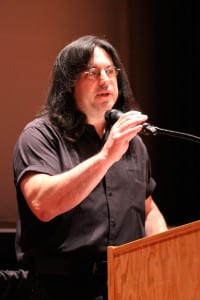By Talia Amorosano
Finding an enjoyable vacation doesn’t have to involve booking a cruise to the Bahamas, a plane ticket to California or even a train ride to New York City. With Long Island’s more than 100 museums, 20 state parks and 30 wineries/vineyards, going somewhere great is as easy as stepping outside of your own backyard (and contains less risk of trampling your neighbor’s freshly planted rhododendrons).

So hop in your car — or better yet, save gas money by hopping in a friend’s car — and explore an unfamiliar township. Because whether you’re looking for fun for the whole family, an escape from reality or a romantic getaway, you’ll find that the list of things to do here stretches as long as the Island itself, and well beyond the length of this list.
Oyster Bay
Spend a day in Oyster Bay if you love history. Planting Fields Arboretum State Historic Park encompasses hundreds of acres of gardens, trails and woodlands, not to mention a 1920s Tudor mansion. There’s also Sagamore Hill National Historic Site, home of Theodore Roosevelt from 1885 through 1919, and Raynham Hall Museum, former residence of Robert Townsend, George Washington’s intelligence operative. Who knows, maybe history will repeat itself and you’ll visit again.
Huntington
There are a ton of things to do here. Purchase tickets to an unforgettable show or concert at The Paramount Theater, tour the Heckscher Museum of Art and historic Oheka Castle or explore the outdoors at Cold Spring Harbor Fish Hatchery and Caumsett State Historic Park Preserve.
Smithtown
Tap Nissequogue River Canoe and Kayak Rentals Inc. to rent (or bring) a canoe or kayak, and paddle along 5.5 miles of tranquil river. If you still can’t get enough nature, take a stroll at scenic Caleb Smith State Park Preserve or visit the rehabilitating animals at Sweetbriar Nature Center. If you still can’t get enough nature, build a tree house in your backyard when you get home or something. But before you go, be sure to stop at Whisper or Harmony Vineyards in St. James, listen to live music and buy a bottle of wine.

Brookhaven
This town offers some wonderful watery swimming, boating and fishing destinations: West Meadow Beach in Stony Brook, Cedar Beach in Mount Sinai, Corey Beach in Blue Point, Davis Park and Great Gun Beach, both on Fire Island, are just some of the important names to remember when planning your next beach daycation in Brookhaven.
Riverhead
Head to the river for a family fun day. The Long Island Aquarium and Exhibition Center, located along the Peconic River, is home to birds, butterflies and bats, along with great numbers of ocean and river dwelling animals. Also fun for kids and adults alike are the Riverhead Raceway and Long Island Science Center.
Southold
Don’t hold out on visiting this beautiful Long Island location. Book a cab ride through gorgeous rural Southold and visit one or more of its many wineries and vineyards: Sparkling Pointe, One Woman Wines and Vineyards, The Old Field Vineyards, Croteaux Vineyards, Mattebella Vineyards, Corey Creek Vineyards and Duckwalk Vineyards are just the cork of the wine bottle. Later, dine at one of more than 40 eateries in the maritime Village of Greenport, considered one of the prettiest towns in the United States.
Southampton
See the seashore like never before at sandy, clean Cupsogue Beach County Park in Westhampton, or lay back in luxury on a True East Charters boat tour of the Hamptons. If staying grounded is more your style, spend a day playing minigolf with the family at the Southampton Golf Range, which also features a driving range, batting cages and an ice rink.
East Hampton
If you’re up for an art-filled adventure, spend an hour at the Pollock-Krasner House and view the paint-splattered space where abstract impressionist Jackson Pollock and fellow artist Lee Krasner created some of their most provocative works. End the day in another world: LongHouse Reserve, where modern sculptures and furniture (created by a seasonal group of artists) fuse seamlessly with the interestingly landscaped grounds.
























































